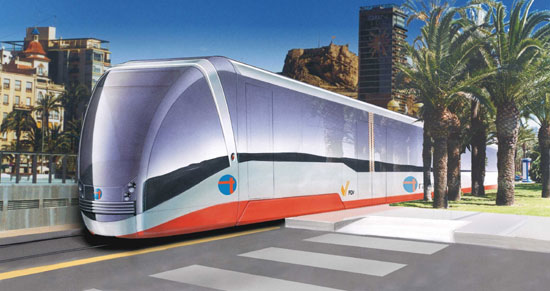THE light rail network in Alicante became Spain’s largest on September 4 with the official opening of the city’s fourth line, which links the city centre with the university and the nearby town of San Vicente del Raspeig.
Line 2 services share tracks with the three existing lines (1, 3 and 4) on the 1.6 km underground section between Luceros and Museo Arqueologico, where they diverge onto the 7.4 km, 11-station branch to San Vicente.
With a commercial speed of 20km/h, headways on the new line will be 15 minutes for most of the day, with an eight-minute interval service at peak times. Initially the line will have a maximum capacity of 4000 passengers per hour and 3 million passengers are forecast to ride the line in its first full year of operation.
Construction started in late 2006 and the metre-gauge line was completed in 2011, following a total investment of more than €100m in the infrastructure and €50m on the LRVs.
Between late 2010 and spring 2013, the regional government tried and failed to find a private sector contractor to take responsibility for the operation and maintenance of the line, which is now operated directly by FGV.
Services on Line 2 are operated by a fleet of 14 Bombardier Flexity Outlook LRVs. Each five-section 34.4m-long vehicle accommodates 50 seated and 150 standing passengers.
The first light rail line was opened in Alicante 10 years ago, and the network now totals 33km, larger than the systems in Barcelona (29km, two lines), Madrid (27.5km, three lines) and Valencia (27km, three lines).


